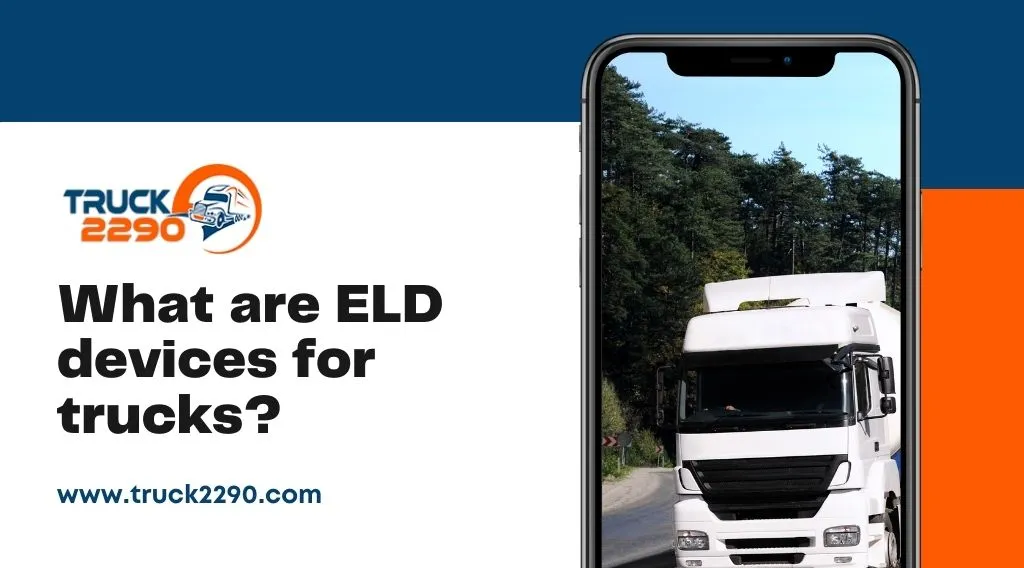In the trucking industry, Electronic Logging Devices (ELDs) have revolutionized the way drivers record and manage their hours of service (HOS) information. With the implementation of ELDs, manual and time-consuming paper logs are becoming a thing of the past. In this article, we will explore what ELD devices are, their purpose, key features, benefits, implementation, and future trends. Join us as we delve into the world of ELDs and their impact on the American trucking industry.
Table Of Content
- Overview of Electronic Logging Devices (ELDs)
- Key Features and Components of ELD Devices
- Benefits of ELD Devices
- ELD Device Implementation and Compliance
- Challenges and Concerns
- Future Developments and Emerging Trends

Overview of Electronic Logging Devices (ELDs):
ELDs are electronic devices designed to accurately record a driver’s HOS information, including driving time, breaks, and rest periods. These devices replace traditional paper logs, ensuring greater accuracy and compliance with HOS regulations. The use of ELDs has been mandated by the Federal Motor Carrier Safety Administration (FMCSA) in the United States to improve safety on the roads and streamline record-keeping processes.
Key Features and Components of ELD Devices:
ELD devices consist of both hardware and software components. The hardware includes an onboard diagnostic port (OBD-II), a display screen, and connectivity options such as wired or wireless connections. The software capabilities of ELDs allow for automatic recording of driving time, integration with vehicle data, secure storage, and retrieval of information, as well as compliance reporting and auditing features.
Benefits of ELD Devices:
ELD devices offer numerous advantages to truck drivers, fleet managers, and regulatory authorities.
- They enhance accuracy and efficiency by automating the recording of driving hours, reducing errors that may occur with manual logs.
- ELDs improve compliance and safety by enforcing HOS regulations in real-time, mitigating the risks associated with driver fatigue and preventing accidents.
- ELDs provide operational benefits, such as optimizing route planning, improving fleet management, and facilitating seamless communication between drivers and dispatchers.
ELD Device Implementation and Compliance:
ELD implementation applies to most commercial motor vehicles (CMVs), with a few exemptions. The transition to ELDs had a deadline, and carriers and drivers must ensure compliance. The FMCSA has outlined specific requirements for ELD installation and use, including technical specifications and certifications. Additionally, drivers need to receive adequate training to familiarize themselves with the device’s operations. Compliance enforcement measures are in place, and penalties can be imposed for non-compliance.
Challenges and Concerns:
While ELDs offer significant benefits, there are some challenges to consider. Cost is a major consideration, especially for small carriers and owner-operators, who may need to invest in hardware and software solutions. Data privacy and security concerns arise due to the electronic nature of ELDs, and it is crucial to ensure appropriate safeguards are in place. Additionally, potential technical glitches or system failures may disrupt operations temporarily, necessitating contingency plans.
Future Developments and Emerging Trends:
The future of ELD technology holds promising developments. Integration with emerging technologies such as telematics and the Internet of Things (IoT) will enhance the capabilities of ELDs, providing even greater insights into fleet management and driver performance. Moreover, the advent of autonomous vehicles may bring about new challenges and opportunities for ELDs, as they adapt to the evolving landscape of the trucking industry.
Conclusion:
ELD devices have transformed the trucking industry by streamlining HOS recording and ensuring compliance with regulations. They offer benefits such as increased accuracy, improved safety, and operational advantages. Despite the initial challenges, ELD implementation is vital for carriers and drivers to adapt to the changing regulatory landscape. Looking ahead, ELDs will continue to evolve and integrate with advanced technologies, shaping the future of trucking in America. Embrace the power of ELDs and unlock the potential for greater efficiency and compliance in your trucking operations.
FAQs
What are the different types of ELD devices?
There are two main types of ELD devices:
Standalone ELD devices: These devices are self-contained and do not require any additional hardware or software.
ELD-compliant apps: These apps are installed on a smartphone or tablet and can be used as an ELD device.
How do I choose the right ELD device for my truck?
When choosing an ELD device, there are a few factors to consider, including:
– The size and weight of the device
– The features that the device offers
– The price of the device
– The compatibility of the device with your truck
Tags
2290 HVUT 2290 Online Filling 2290 Schedule 1 Proof 2290 tax 2290 Tax Form Online 2290 Truck Tax 2290 Vehicle Category E-file Form 2290 E-file IRS Form 2290 Online E-filing 2290 EIN Electronic Funds Withdrawal or EFW Error Code File Form 2290 File Form 2290 Online Filling Requirements Form 2290 Form 2290 Due Date Form 2290 exemptions Form 2290 Penalties Form 8849 Gross Taxable Weight Heavy Vehicle Use Tax Heavy Vehicle Use Tax or HVUT HVUT HVUT Payment HVUT Penalty HVUT tax IRS IRS 2290 phone number IRS approved e-file provider IRS Form 2290 IRS Form 2290 Due Date IRS From 2290 IRS HVUT Tax IRS regulations IRS Schedule 1 IRS Schedule 1 Proof IRS Tax Form Stamped Schedule 1 Tax Form 2290 Tips For Truckers Truck2290 Truck Driver VIN correction
